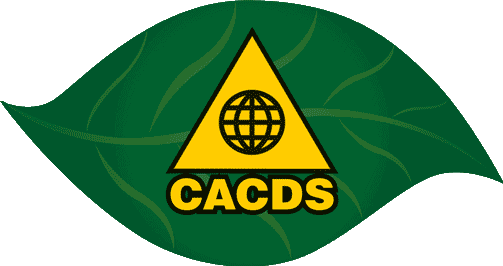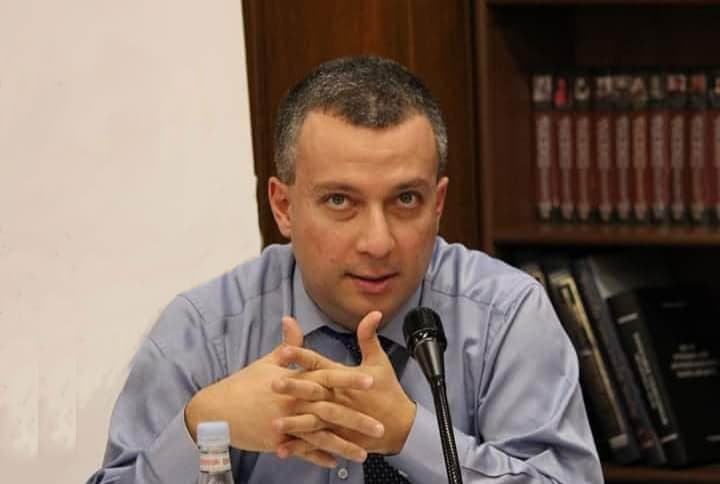August 9 Presidential elections in Belarus were in the focus of the experts and mass media long before the election date. Several factors have contributed to the wide spread perception, that this time things will turn out differently and long time leader Aleksandr Lukashenko will face tough challenges both prior and after the elections. Interestingly, the most discussed scenario before the elections was not the US and EU efforts to topple ‘the last dictator of Europe”, but the high probability of Russia initiated “Color revolution” to either force President Lukashenko out or significantly weaken him, to derail the normalization process with the EU and the US and to make Lukashenko more flexible in the negotiations with Russia on the establishment of the “Union state”. The tough rejection by President Lukashenko of the Russian offers to accelerate the launch of “Union state” during his two long face to face meetings with President Putin in December 2019 has only increased the perception of existence of fundamental differences between two leaders. When the long term head of Gazprom controlled Belgazprombank Viktor Babaryko stated his intention to run for the presidency, this was perceived as a clear message from Kremlin that Russia is resolute to make life harder for Belarusian President. Another opposition candidate, former Belarusian ambassador to the US Valery Tsepkalo was also perceived as a Russia created project to challenge Lukashenko.
Lukashenko seemed to perceive Russian threats rather seriously. He made significant steps to increase contacts with the West and at the beginning of February met with the US Secretary of State Michael Pompeo in Minsk. Mr. Pompeo promised full US support for Belarus sovereignty and hinted that the US will assist Belarus to overcome its dependence over Russian oil and gas supply. We may assume that behind the closed doors Mr. Pompeo assured President Lukashenko that if he continues to resist Russian pressure, the West may turn a blind eye on possible irregularities before and during the Presidential elections.
Belarusian law enforcement bodies arrested Viktor Babaryko accusing him of money laundering on June 18, 2020 and while Lukashenko attended Victory Day parade in Moscow on June 24, relations between two sides were deteriorating. At the end of July Belarusian authorities forced Tsepkalo to leave Belarus with his two children. The July 29 arrest of the alleged 33 Russian mercenaries from Vagner private military company in Belarus and President Lukahsnko’s public statements about their intention to destabilize the situation after the election contributed to the perception that this time it was Kremlin who sought to organize “Color revolution” in post-soviet space.
Belarusian Central Election Committee did not register either Babaryko or Tsepkala as Presidential candidate. The only serious opposition candidate, who was allowed to participate in the elections, was Svetlana Tsikhanovskaya, the wife of the arrested opposition blogger Sergey Tsikhanovski. Thus, it seemed that President Lukashenko effectively had thwarted Russian plots to destabilize situation in Belarus and had all chances to quietly win his sixth Presidential term.
However, immediately after the closure of election precincts in the evening of August 9 the wide spread protests have erupted in several towns of Belarus. There were violent clashes with riot police and army special units which resulted in 2 deaths, many more have been wounded, and thousands have been arrested. After the first three days of protests clashes with riot police have been ceased but situation remains fragile as several strikes have been launched in key Belarusian factories.
Svetlana Thsikhanosvakaya has left for Lithuania and called people to continue their fight against Lukashenko while Valery Tspekalo left Russia for Ukraine and on August 19 arrived in Poland with his two children and wife, Veronika, who was active participator in Sevtlana Tsikhanovskaya campaign. Meanwhile, the EU has not recognized elections results, and promised to impose personal sanctions on those who were responsible for election fraud and post election violence. European leaders called for inclusive national dialogue and supported proposals within the OSCE to launch dialogue. President Lukashenko has publicly accused the West and in particular the US and Poland for organizing protest movements in Belarus, while Russian authorities have called the Western states to not intervene into the domestic affairs of Belarus and respect Minsk sovereignty. Thus, interestingly, the seemingly Russian efforts to instigate anti Lukashenko protests prior to August 9 elections have ended in much similar scenario of Russia and Lukashenko accusing the West of orchestrating another color revolution within Russian sphere of influence.
It’s difficult to assess the real scope of external actors’ actions in Belarus. However, we may assume that two parallel but very similar processes have been underway in Belarus initiated by Russia and some circles in the West. Both sought to destabilize situation in Belarus prior and after the elections but with different goals. Russian immediate goals were to stop the further normalization of relations between Belarus and the West, and to significantly weaken President Lukashenko, while later to initiate power transition from Lukashenko to more Russia friendly person under the significant Russian involvement in Belarus. Some circles in the West hoped that Lukashenko’s full attention was focused on Russian threats and this might help them to organize a blitzkrieg and force him out as a result of strong protest movement which should caught him by surprise.
However, as for now events have been developing mainly by Russian scenario. President Lukashenko had several phone conversations with President Putin and stated that in case of external military threats Russia was ready to provide necessary support to Belarus. Meanwhile several groups of Russian consultants have already arrived in Belarus and have been embedded within Belarusian state institutions thus significantly increasing Russian influence over Minsk. Meanwhile, key European players including leaders of Germany and France have discussed the situation in Belarus with President Putin and emphasized the necessity to solve the crisis through intensive nationwide dialogue. This may provide Russia an opportunity to implement his plan of power transition from Lukashenko with EU support by initiating and effectively controlling dialogue between Lukashenko and opposition. In this case we may see the repeat of the June 2019 Moldova scenario.
Another actively discussed topic after August 9 elections in Belarus is the similarities between situation in Belarus and April 2018 “Velvet revolution” in Armenia. On August 18 former Sweden foreign minister Carl Bildt even published a paper “The Armenian model for Belarus”. The main argument of Mr. Bildt was the assertions that as was the case of Armenia, protests in Belarus were not a geopolitical struggle and should not result in Belarus exit from either CSTO or Eurasian Economic Union or its signature of Association Agreement with EU.
However, it should be emphasized that there are some key differences between 2018 events in Armenia and current developments in Belarus. First of all in Armenia there were clear fissures between President Serzh Sargsyan and Prime Minister Karen Karapetyan immediately prior to the “Velvet revolution”. Karapetyan assumed the Prime Minister office in September 2016 and played a key role in securing the victory of Republican Party in April 2017 Parliamentary elections. There was a de facto agreement between him and President Sargsyan that Republican Party will elect him Prime Minister in April 2018, after the transition to the fully parliamentary system and the end of the Sargsyan’s second presidential term. However, at the beginning of 2018 Sargsyan stated about his goal to be elected Prime Minister which triggered tacit but tough struggle between two leaders. Meanwhile, before August 9 the was no public break within Belarusian leadership and no one from inner circle of Belarusian President was publicly expressing intention to replace Lukashenko as a leader of Belarus.
The second big difference is the geopolitical position of Armenia and Belarus. Armenia is under permanent threat of physical extermination by Azerbaijan – Turkey alliance, and needs support of external actors to balance Turkey. Due to the apparent reasons neither US nor EU are able to provide iron-clad security guarantees to Armenia against Turkey’s military adventures, and this fact prevents any force in Armenia, even ideologically the most liberal, pro Western and anti-Kremlin one, to initiate break with Russia. Meanwhile, no state threatens Belarus with military attack and occupation, Belarus has open borders with EU and NATO members Poland, Lithuania and Latvia, and may quickly change its geopolitical orientation without putting the existence of the state into doubts. Thus, it’s would be difficult to convince Russia that if pro-Western forces come to power in Belarus they may not seek to gradually make a geopolitical shift towards the West.
As for the similarities regarding Russian involvement in both events, it should be noted that there are several narratives on what happened in Armenia in 2018. According to some, at the initial stages of protest movement (March 31 – April 23, 2018) it was either initiated or supported by Prime Minister Karapetyan, as he hoped to use the movement as an effective tool to prevent President Sargsyan’s election as Prime Minister, or in the case of failure to force him to resign from that position. However, after Sargyan’s resignation from the Prime Minister position on April 23 (he was elected by Parliament on April 17, while Karapetyan was appointed as the first deputy prime minister), Karapetyan himself was outmaneuvered by the protest leaders who managed to come into terms with Russia promising to make no significant changes in Armenian foreign policy and thus securing Russian non interference.
Another narrative argues that Russia was unhappy with President Sargsyan due to his active efforts to reach out to the West (Armenia was the first among six Eastern Partnership participant countries which successfully finished the drafting of Association Agreement with EU including creation of DCFTA and Sargsyan was literally forced to cancel its signature and join Eurasian Economic Union at the last minute tough pressure by President Putin) and did not approve his decision to continue to govern Armenia after April 2018 as a Prime Minister.
Thus, from the beginning Russia was supporting protest movement seeing it as a tool to force Sargsyan out. Some forces in Kremlin were supporting Karen Karapetyan viewing him as a right person to replace Sargsyan, while others were seeking Sargsyan ouster through protest movement. Thus, Karapetyan did not enjoy full support of Moscow and at the end of the day the forces in Kremlin supporting protest movement managed to reach their goals. However, regardless of the details, Russia played a significant role in April – May 2018 events in Armenia either from the beginning or by shaping the outcomes at the end. Here there are similarities with the current situation in Belarus. Russia is apparently unhappy with incumbent Belarusian President, seeks ways to force him out and to secure more Russia friendly government after Lukashenko. Meanwhile, as was the case in Armenia in 2018, Russia has played and will play significant role in shaping the future political developments in Belarus.
Dr. Benyamin Poghosyan, Chairman, Center for Political and Economic Strategic Studies





